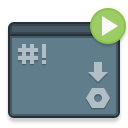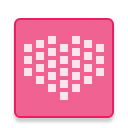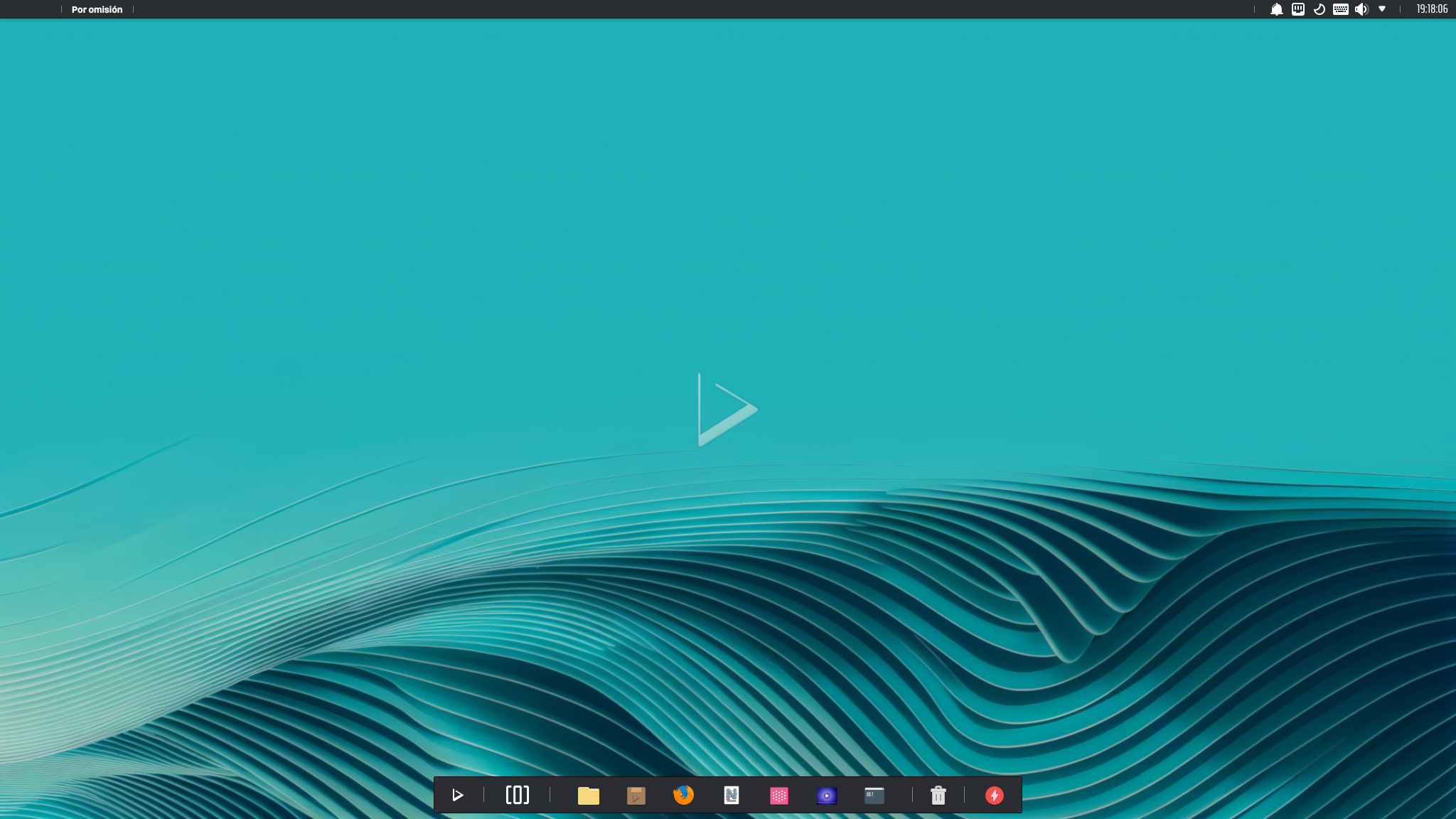
Welcome to the #NXWorld
Hi there! Meet Nitrux.
Powered by Debian, KDE Plasma and Frameworks, and AppImages.
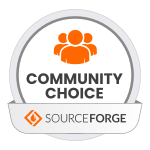
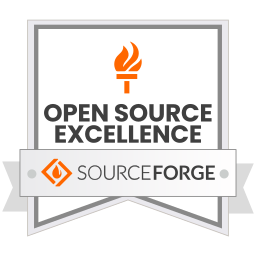
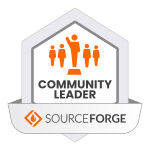
#YourNextOS
Nitrux is made with by people like you.
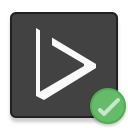
Nitrux at a glance
Nitrux is a Linux desktop distribution directly based on Debian. It uses the Calamares installer and includes NX Desktop on the KDE Plasma 5 desktop environment and KDE Applications.
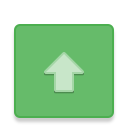
Updated software on every release
Nitrux is very up-to-date, thanks to its use of the latest Debian base and the Liquorix kernel, an enthusiast Linux kernel designed for uncompromised responsiveness in interactive systems. Nitrux includes additional performance enhancements, such as allowing “inodes” to be placed at any location on the filesystem, compression using zstd with compression at level 6, and verification of compressed blocks using a checksum to avoid corruption.
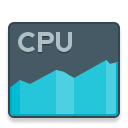
High-performance desktop/workstation
Additionally, Nitrux includes enhancements such as a better garbage collector and asynchronous garbage collection, avoiding the synchronous updating access or modification times, zswap enabled by default, and also changes include the rate at which VFS caches are reclaimed, enabling asynchronous non-blocking I/O, and reducing the aggressivity when the kernel swaps out anonymous memory relative to pagecache and other caches.
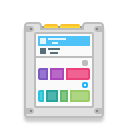
Exceptional system integrity
Nitrux is an immutable Linux distribution, meaning no changes occur to the content of the root directory by default. We use overlayroot, which allows us to provide new distribution versions more accurately. An immutable operating system is a system that, once installed, cannot be modified. On Nitrux, the root directory is default set to be immutable, meaning no changes occur to its contents. It makes the system more resistant to tampering, malware and simplifies maintenance.
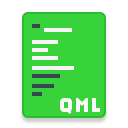
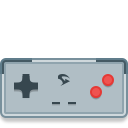
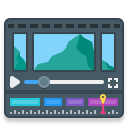
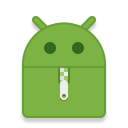
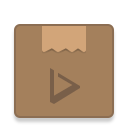
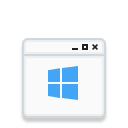
What could I use Nitrux for?
Well — just about anything! It can perform many functions that any computer could use. Surf the internet, word process, email, spreadsheets, listen to music, watch movies, chat, games, photo editing, content creation, whatever you want!
Introducing NX Desktop.
https://nxos.org/english/nxd/

We extend Plasma to allow the user to glance over system operations with easy-to-understand status displayed on the screen. NX Desktop is our set of applied customizations to the Plasma 5 Desktop. It includes new plasmoids (or Plasma widgets) and a new LnF (also known as a “look and feel”) package that includes the following items: KStyle, KWin decorations, wallpapers, Plasma themes, Konsole theme and profile, Aurorae themes, SDDM themes, cursors, and color schemes.
**NX Desktop is not a desktop environment; it’s a customization layer. NX Desktop does not provide a file manager, web browser, multimedia player, email client, address book, PDF reader, photo manager, or system preferences application.
Quick access to networks
Easily access and edit your network preferences.
Better workflow.
If you’re a fan of tiling windows, you’ll feel right at home.
- DWM-like window tiling
- Dynamically tile windows, rather than manually placing each.
- Floating windows
- Fully integrates into KWin features, including:
- Multi-screen
- Activities & Virtual desktop
- Essential window management (minimize, fullscreen, switching, etc.)
- Multiple Layout Support
- Tiling layout
- Monocle layout
- Desktop-friendly layouts (Spread, Stair)
**Tiling windows functionality must be enabled in System Settings.
Additionally, we provide a way to run menubar commands with plasma-hud, much like the Unity 7 Heads-Up Display (HUD). A Heads-Up Display (HUD) allows you to search through an application’s tool menu.
**To invoke the HUD, press the Menu key.
Easy workspace navigation
Touchégg is an app that runs in the background and transforms the gestures you make on your touchpad or touchscreen into visible actions on your desktop. For example, you can swipe up with three fingers to maximize a window or swipe left with four fingers to switch to the next desktop.
Many more actions and gestures are available, and everything is easily configurable.
The Overview will let you visualize all your virtual desktops and windows swiftly. You can move windows between virtual desktops and close and configure them to accommodate your workflow.
**Touchégg only works with X11.
**Overview can be activated using CTRL+W or a three-finger gesture on the touchpad.
MauiKit is a free and modular UI framework for developing user experiences.
https://mauikit.org/

A set of templated controls and tools initially based on QQC2 and Kirigami shared among the Maui set of applications. MauiKit helps to quickly build UIs that follow the Maui HIG and are ready-to-go tools for different platforms, such as Android and Linux—seamless transition between mobile and desktop technology — where the line between desktop and mobile is blurred. Using the same codebase, Maui Apps provides users with one app for multiple form factors. Accomplish what would otherwise take hundreds in a few lines, from concept to the end user’s screen — the fastest way to create convergent apps.
Cross-platform
Components ready to easily use and that work on Android and Linux
Convergent
Easily create applications that work on mobile devices and desktop computers.
LGPL 3 Licensed
MauiKit is a free and open-source project, and you can use, copy, merge, publish, and distribute the framework without significant limitations.
The fastest way to develop beautiful desktop and mobile apps
Experience streamlined development with zero-time setup, using the technologies you already know and love – Qt, QML, and C++.
Brilliant look and feel with lots of ready-to-use components and styling
Various UI components are specially designed for mobile and desktop apps. MauiKit provides tons of elements. They all have Linux and Android support. With MauiKit, you can support Android and Linux with the same source code.
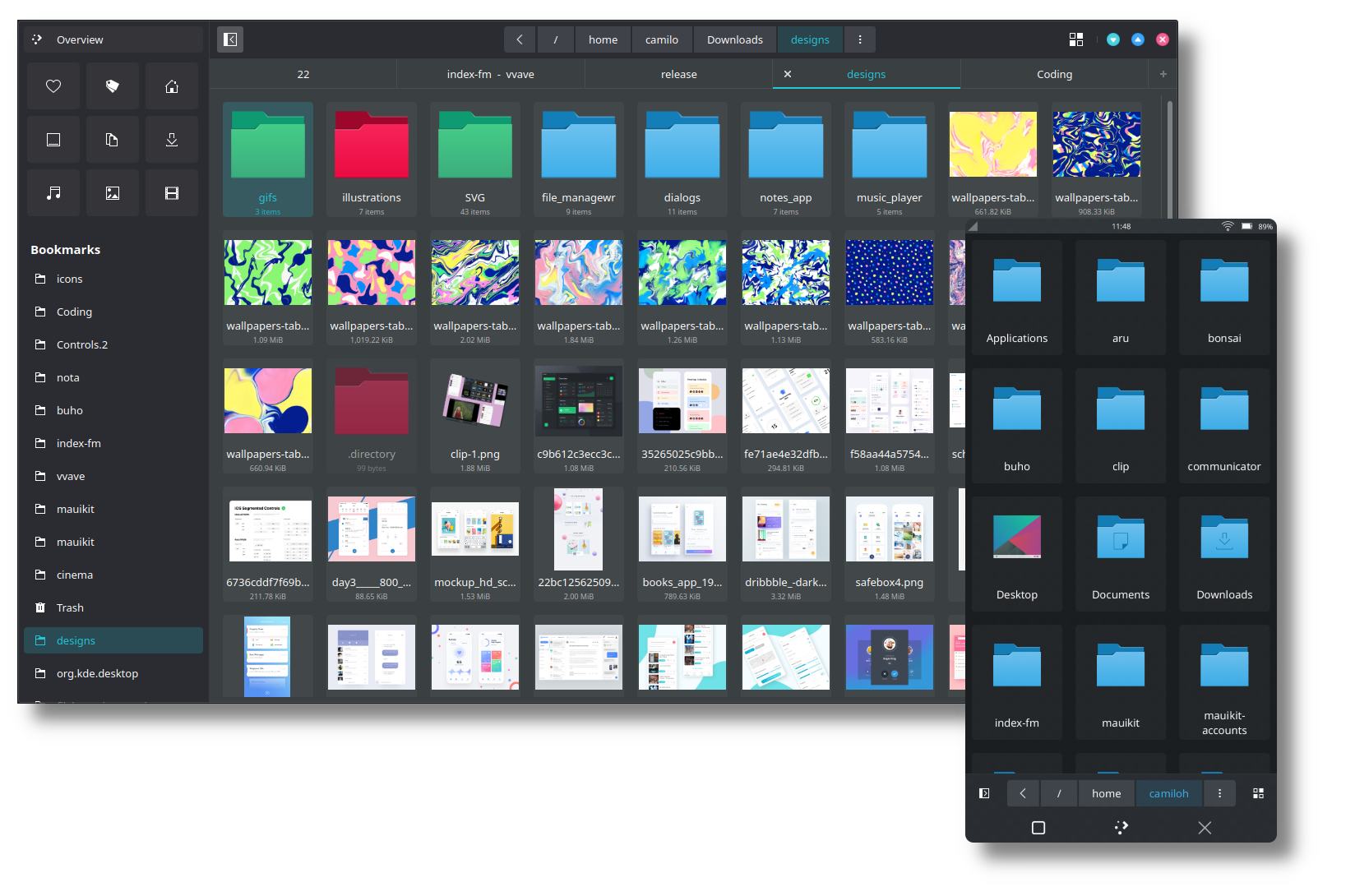
Immutability enhances the integrity of our operating system.
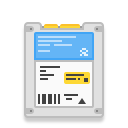
Improved system integrity and certainty
An immutable operating system remains unchangeable after installation, providing a degree of certainty. In the case of Nitrux OS, it maintains the immutability of the root directory, safeguarding its original content. This design choice offers notable advantages, such as:
- An immutable system enhances confidence in delivering new distribution versions without root conflicts.
- It also prevents issues arising from upgraded packages sourced outside our controlled repository.
This approach also strengthens security against tampering and malware and simplifies system maintenance by minimizing potential points of failure. It finds popularity in security-sensitive contexts like military and financial systems. The core benefits include shielding against update failures and user errors by rendering essential components as read-only, streamlining maintenance due to reduced vulnerabilities to mishaps, and ensuring unperturbed system integrity impervious to malware threats.
Overlayroot is a tool that utilizes OverlayFS, a union filesystem implementation. OverlayFS presents a unified view of two different filesystems; the presented filesystem results from overlaying one filesystem over another. OverlayFS presents the object from the upper filesystem and hides the object from the lower filesystem if a particular object exists in both the upper and lower filesystems. It merges and presents the directory’s contents on the upper and lower filesystems if the object is a directory.
Effortless system upgrades
In today’s dynamic OS landscape, seamless updates and dependable rollbacks are more crucial than ever. The Nitrux Update Tool System streamlines distribution updates while ensuring a safety net against unexpected issues.
At its core, the Nitrux Update Tool System simplifies the update process:
- Confident Backups: It creates a backup of the root directory using SquashFS and the XFS partition using the XFS utilities and stores them locally.
- Swift Updates: Then, it downloads an OTA-style update file and updates the system using a custom AppImage.
- Effortless Rollbacks: Depending on the situation, the utility uses ‘rsync’ and the locally generated SquashFS file or the XFS tools when restoring a backup.
Key to the tool is its autonomy, requiring minimal user input. It caters to new users and experts, delivering simplicity, security, and hassle-free system management.
In a world prioritizing security and convenience, the Nitrux Update Tool System emerges as a reliable companion. Its backup precision, efficient updates, and stress-free rollbacks offer a smoother, safer, and streamlined way to keep systems current and secure, whether for casual users or tech enthusiasts.
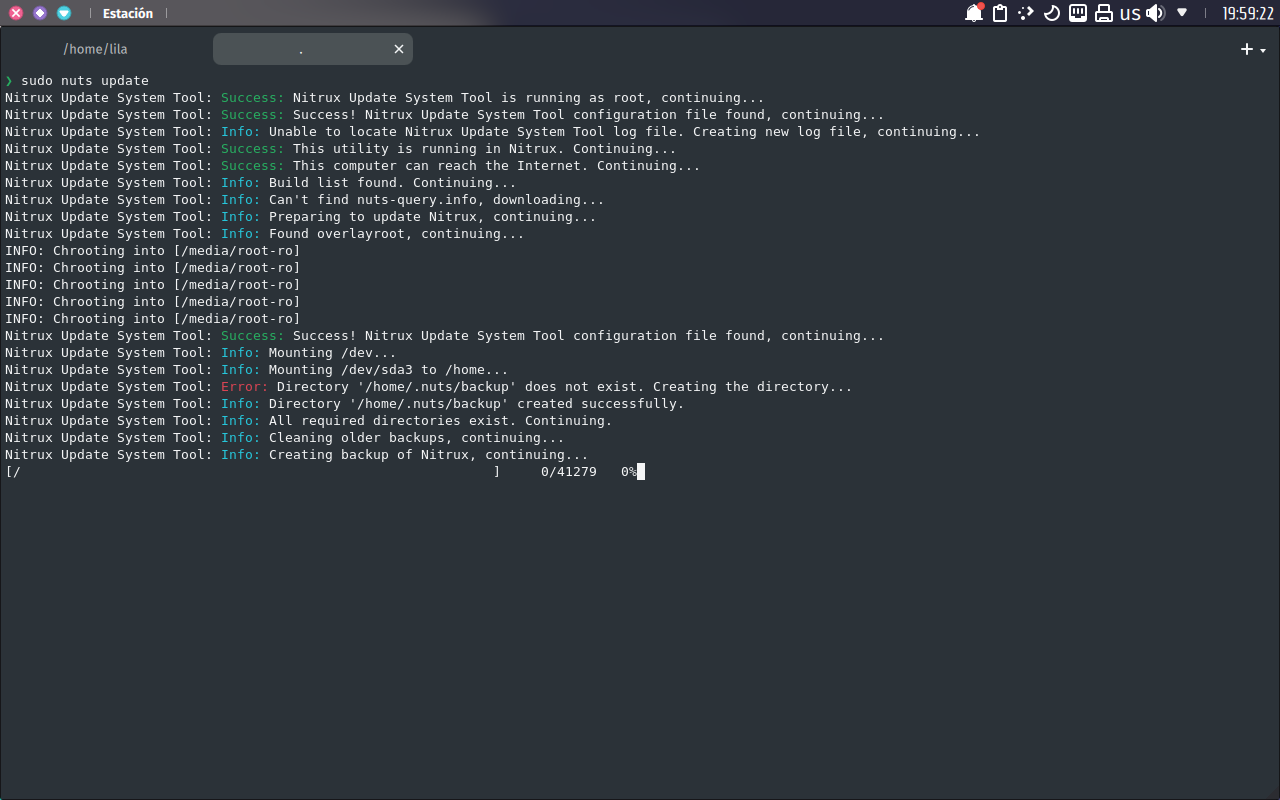
Everything you need to get started.
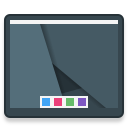
Available out-of-the-box
Nitrux is a complete Operating System that ships the essential apps and services for daily use: office applications, PDF reader, image editor, music and video players, etc. Nitrux includes a suite of convergent applications called Maui Apps. We use MauiKit, our convergent, cross-platform UI framework, to create these applications. KDE Applications are a set of applications and supporting libraries designed for KDE Plasma 5. We also include non-KDE or Qt applications like Firefox that create a friendly user experience.
Nitrux also includes a selection of applications carefully picked to perform the best when using your computer:
Built with MauiKit
Index, the file manager.
Nota, the simple text editor.
Station, the terminal emulator.
Pix, an image gallery.
VVave, a music player.
Buho, a note-taking application.
Shelf, a light and straightforward PDF viewer.
Clip, a video player.
NX Software Center, the store for AppImages.
Strike, an IDE for C++ projects.
Bonsai, a Git repository manager.
Arca, the archiving tool.
A great selection of Open Source software
KCalc, the calculator.
Plasma System Monitor, the system task manager.
Spectacle, a screenshot utility.
Firefox, the ethical web browser.
Partition Manager, an application to manage disks and partitions.
Hardware Probe, a CLI utility to provide a detailed summary of a computer.
… and more!.
Explore a universe of apps in Nitrux with AppImage.
https://appimagehub.com/

One app = one file
AppImage provides a way for upstream developers to offer “native” binaries for Linux users just as they could for other operating systems. It allows packaging applications for any standard Linux-based operating system, e.g., Ubuntu, Debian, OpenSUSE, RHEL, CentOS, Fedora, etc. AppImages come with all dependencies that cannot be assumed to be part of each target system in a recent enough version and will run on most Linux distributions without further modifications.
By bundling your application as an AppImage, you can provide an official download for Linux like you would for Windows and macOS, where you can the author control the end-to-end user experience with no intermediaries between you and the author and your end-user. With just one AppImage, you can reach users of most Linux distributions. You can provide new download links as often as you like, e.g., for each continuous build.
Also, doing an AppImage has these advantages:
- Just one format for all major distributions.
- Works out of the box; no installation or runtimes needed.
- No-root needed.
- One app = one file = super simple for users.
- Desktop integration with appimaged.
- Binary delta updates, e.g., for continuous builds (only download the binary diff) using AppImageUpdate.
- Sign your AppImages with GPG 2 (inside the file).
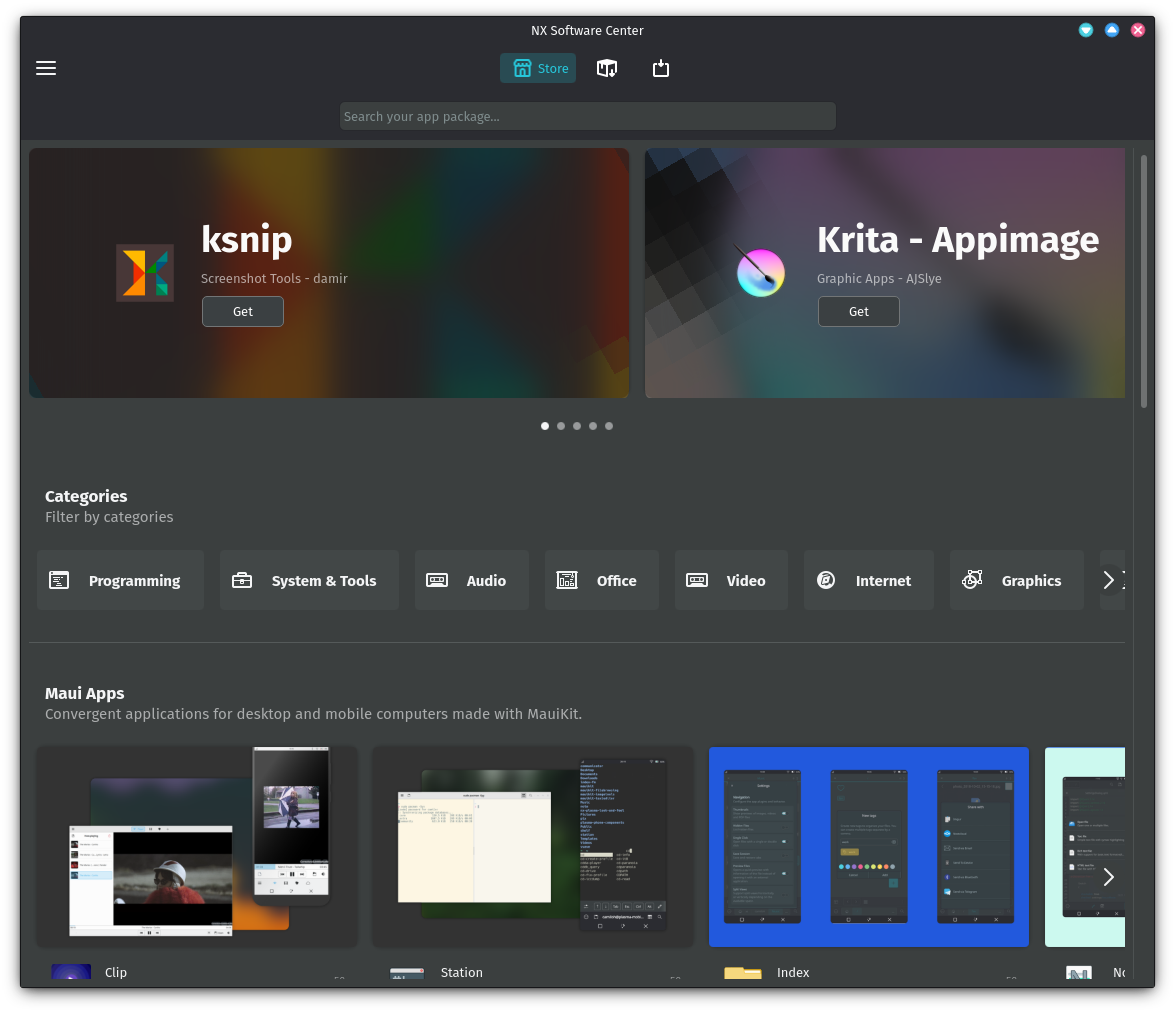
Use every package manager anywhere at the same time.
https://github.com/89luca89/distrobox

Containers made easy
Distrobox is based on an OCI image and implements concepts similar to ToolBox, built on top of Podman and OCI standard container technologies.
Here are some of the highlights of Distrobox.
- Provide a mutable environment on an immutable OS, like Endless OS, Fedora Silverblue, openSUSE MicroOS, or SteamOS3.
- Provide a locally privileged environment for sudoless setups (e.g., company-provided laptops, security reasons, etc.)
- To mix and match a stable base system (e.g., Debian Stable, Ubuntu LTS, RedHat) with a bleeding-edge environment for development or gaming (e.g., Arch, openSUSE Tumbleweed, or Fedora with the latest Mesa.)
- Leverage large, curated distribution images for Docker/Podman to manage multiple environments.
Users can use a container of any Linux distribution (Arch, Fedora, Debian, openSUSE, NixOS, Gentoo, and many more), including multiple containers simultaneously; there’s no limitation. Distrobox also allows users to export software that uses a desktop launcher to automatically integrate it into the application menu, even picking up the artwork from the host, like application themes and icons.
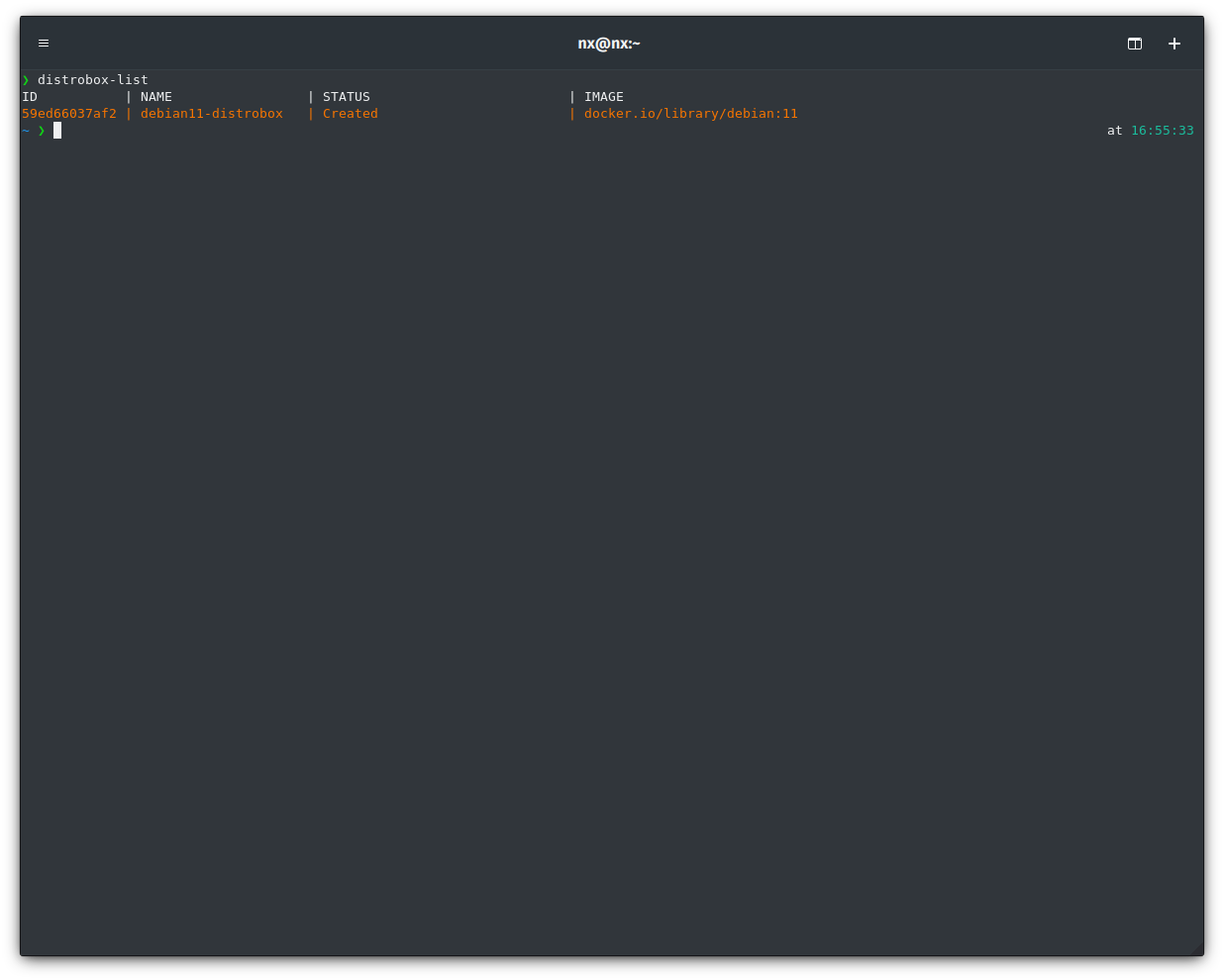
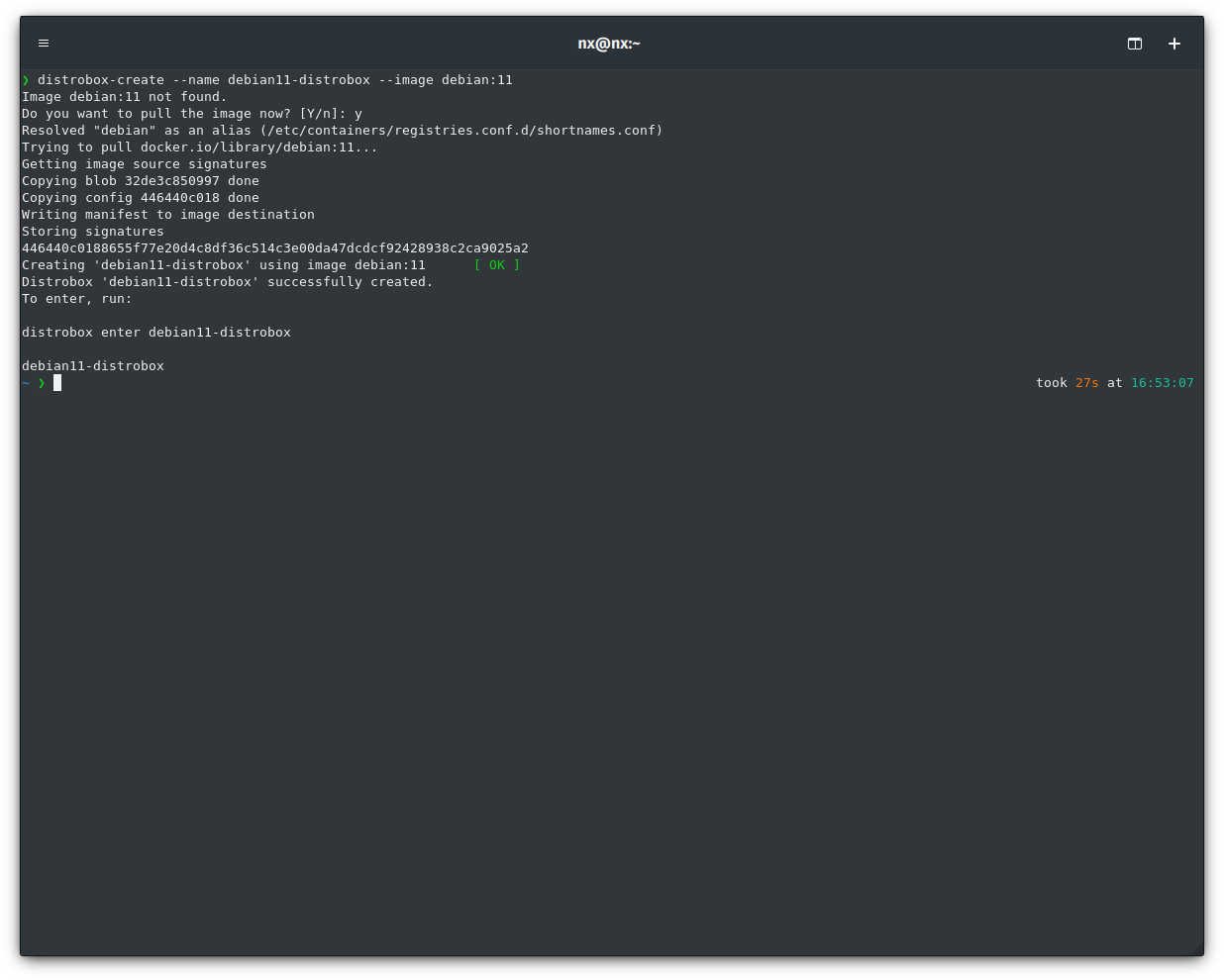
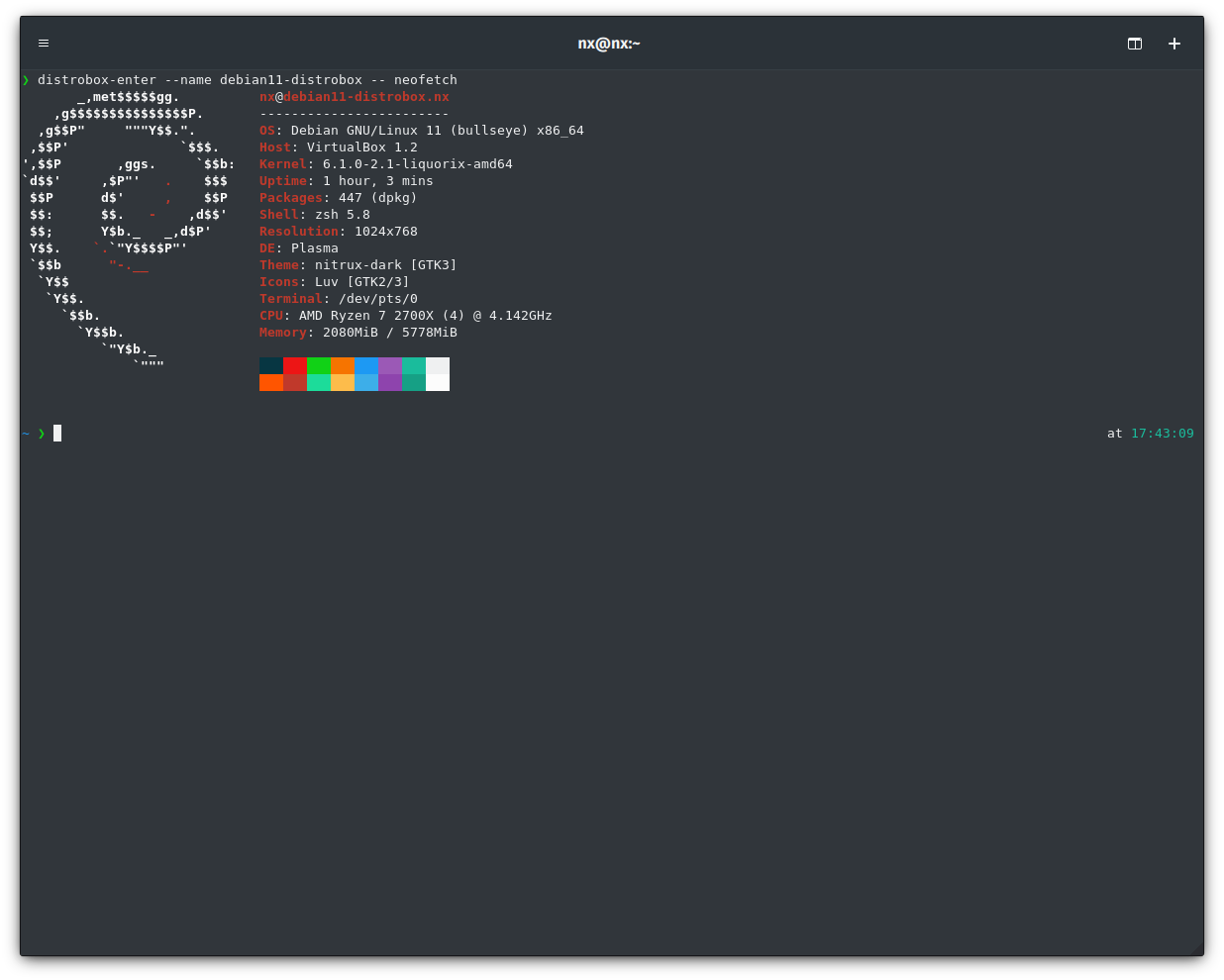
Run Android apps natively.
https://waydro.id/
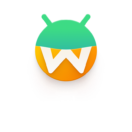
Get your favorite Android apps on Linux
Waydroid is “A container-based approach to boot a complete Android system on a regular GNU/Linux system like Ubuntu.”
- Main Features of Waydroid:
- Free and Open-Source. The Project is entirely free and open-source; currently, our repo is hosted on GitHub.
- Full app integration. Waydroid is integrated with Linux adding the Android apps to your linux applications folder.
- Multi-window mode. Waydroid expands on Android freeform window definition, adding several features.
- Full UI Mode. Waydroid can also be run for gaming and full-screen entertainment to show complete Android UI.
- Near native performance. Get the best performance possible using Wayland, MESA, and AOSP, taking things to the next level.
- Active community. Find out what all the buzz is about and explore all the possibilities Waydroid could bring.
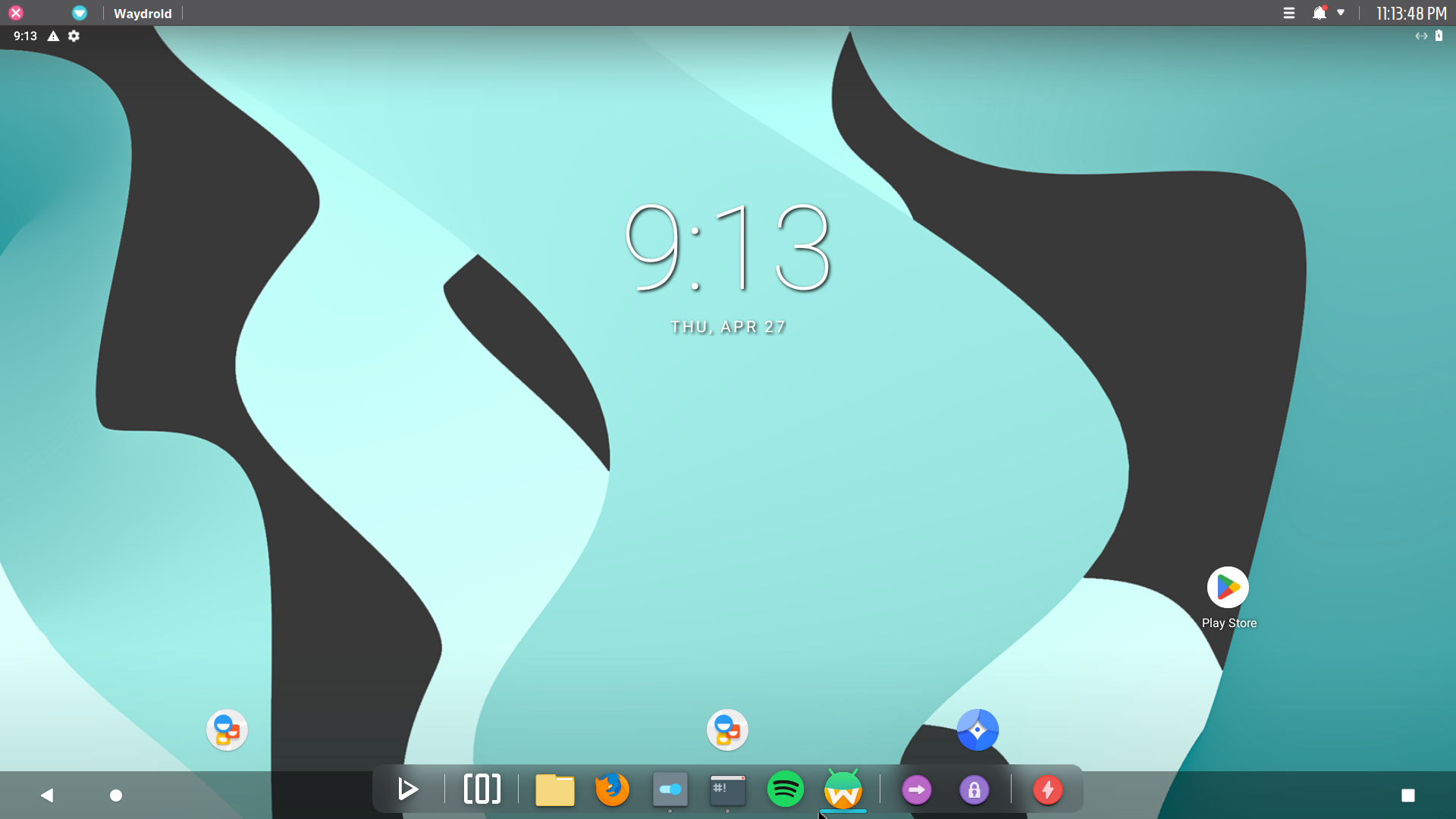
Securing your desktop and workstation.
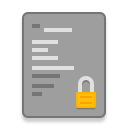
Elevating your digital safety and protecting your local data
Nitrux takes extra steps to keep your personal information safe, and we enable the following security features and policies by default compared to our upstream base.
- Disable core dumps. Core dumps are created for diagnosing and debugging errors in Linux applications. However, core dumps may contain sensitive info, such as passwords and user data, including PAN, SSN, or encryption keys. Also, they take up a large amount of disk space too.
- Stricter password expiration date. Passwords are the primary key to accessing an account, related services, and data, and therefore, they need to be protected via a strong password and password expiry policy. The default expiration date of passwords in Debian is 99999 days; ours is 1111.1 times shorter.
- Increment in hashing rounds for passwords. With over 60k rounds, it is more difficult to brute force the password; by default, Debian uses 5000 rounds, which is too low for modern hardware.
- Passwords use SHA-2 512 encryption. Contrary to Debian, which uses yescrypt by default.
- Increment in complexity for new passwords. This rule is not enforced in Debian, but it is enforced in Nitrux starting with version 2.8.1.
- Deactivate the root account in the Live session and on the installed system. By default, Nitrux does not add or enable a password for the root account. Any administrative tasks performed by the user must be done through the use of sudo.
- Enforce a stricter password quality policy. By default, we use libpwquality to increase user account security. Users must use a password over eight characters long, including uppercase, lowercase, numbers, and symbols, with sufficient randomness when creating a user account. This policy is enforced during installation and for user accounts created post-installation.
Plasma Firewall is an open-source application that provides users with a graphical user interface (GUI) for the ufw (Uncomplicated Firewall)/iptables command-line interface that lets users manage the Linux kernel packet filtering system.
Nitrux includes and uses AppArmor by default, which, in conjunction with Firejail, can offer a more robust configuration. AppImages are sandboxed by default using Firejail, and other executables have AppArmor profiles enabled. Additionally to AppArmor and Firejail, we also include Bubblewrap, which is a low-level, unprivileged sandboxing tool used by Flatpak and similar projects. By default, we include 117 AppArmor profiles and 1247 Firejail profiles.
Nitrux provides multiple ways to encrypt information, including block-device (dm-crypt) during installation, filesystem-level (f2fscrypt), and userland encryption tools like fscrypt and Plasma Vaults (Plasma Vaults is tightly integrated with Plasma Desktop and can be accessed from the system tray). Also, Nitrux includes the Advanced Intrusion Detection Environment or AIDE as an additional security feature. AIDE is an intrusion detection system that detects changes to files on the local system. It creates a database from the regular expression rules that it finds from the config file.
To protect our user’s privacy and anonymity online, we include DNSCrypt-Proxy 2, which is a flexible DNS proxy with support for modern encrypted DNS protocols such as DNSCrypt v2, DNS-over-HTTPS, Anonymized DNSCrypt and ODoH (Oblivious DoH). Nitrux also includes Tor, a connection-based, low-latency, anonymous communication system.
Additionally to DNSCrypt-Proxy 2 and Tor, Nitrux includes dbab, a DNSmasq-based ad-blocking utility using Pixelserv, which works at the DNS level, leaving the web pages intact without pattern matching, string substitution or/or replacing HTML elements. dbab will replace ads with a 1×1 pixel gif image served locally by the dbab-svr pixel server, and it’s also maintenance-free. You don’t need to maintain the list of ad sites yourself. dbab will periodically download the block list from pgl.yoyo.org. If you don’t like some of the entries, you can quickly add to or remove them from that list.
To further improve the security of users online, Nitrux includes support for OpenVPN, OpenConnect, and Wireguard; the latter is a novel VPN that runs inside the Linux Kernel and uses state-of-the-art cryptography (the “Noise” protocol).
**Despite the efforts and improvements in each release, we’re not claiming to be security or forensic experts or that the distribution is “impenetrable” or “unhackable,” so there isn’t any misunderstanding.

Automate version and backup sync of your files.
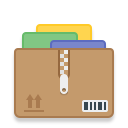
Keep up-to-date backups of your data
Kup helps people to keep up-to-date backups of their files. Connecting a USB drive is the primary way to store data, but saving files to a server over a network connection is also possible for advanced users.
A detailed list of features
- Backup types:
- Synchronized folders with the use of “rsync.”
- Incremental backup archive with the help of “bup.”
- Backup destinations:
- The local filesystem is monitored for availability. That means you can set a destination folder that only exists when a network shared drive is mounted, and Kup will detect when it becomes available.
- External storage, like USB hard drives, is also monitored for availability.
- Schedules:
- Manual only (triggered from tray icon popup menu)
- Interval (suggests new backup after some time has passed since the last backup)
- Usage-based (means new backup after you have been active on your computer for some hours since the previous backup).
In general Kup tries to not disturb you needlessly.
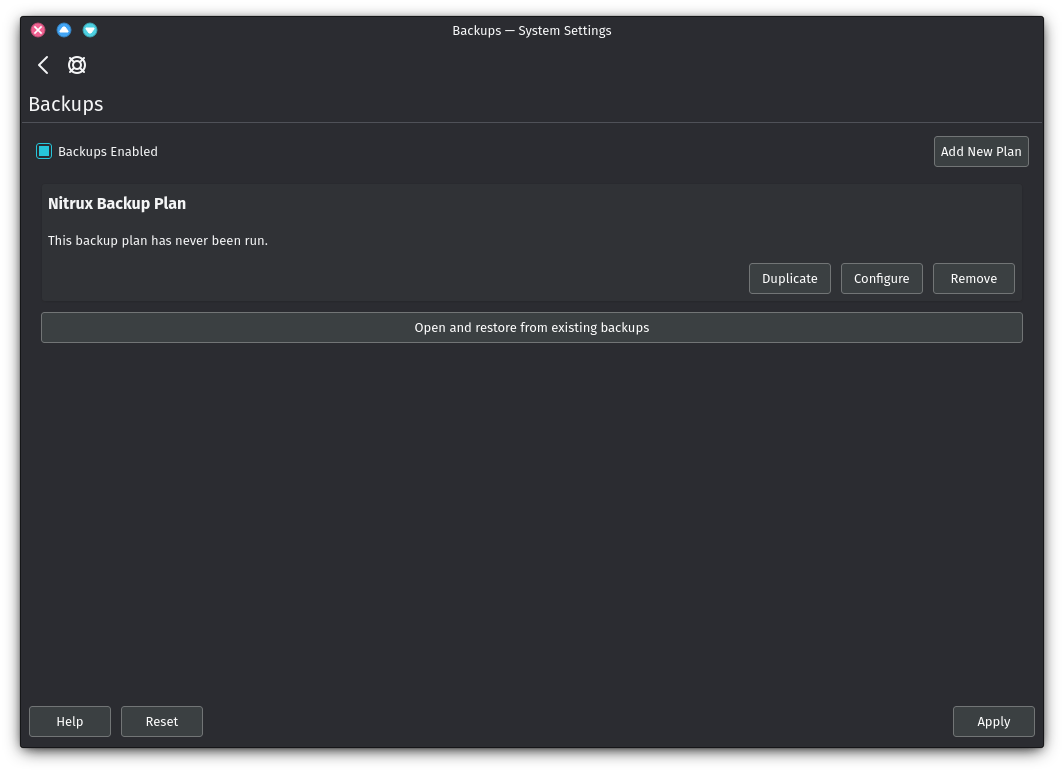
Multilingual support out of the box.
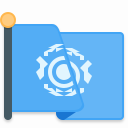
A Linux for everyone
Fcitx5 is an input method framework with a lightweight core, offering additional language support via add-ons. It is the successor to Fcitx, and it can help you type your language and also features a variant choice of add-ons that improve your typing experience.
- Currently, it supports Linux and Unix systems like FreeBSD. Fcitx supports typing in many languages all over the world with a large number of engines.
- Fcitx has a slim core while providing powerful features with add-ons. It is easy to customize fcitx to satisfy your own needs.
An input method (or input method editor, commonly abbreviated IME) is an operating system component or program that enables users to generate characters not natively available on their input devices by using sequences of characters (or mouse operations) that are available to them. Using an input method is usually necessary for languages that have more graphemes than there are keys on the keyboard.
Nitrux includes a KCM for System Settings to facilitate its configuration. We also include additional translation packages for the following languages.
- Arabic
- Bengali
- Deutsch
- French
- Spanish
- Portuguese
Additionally, we include support for Mozc, a Japanese Input Method Editor (IME) designed for multi-platform such as Android OS, Apple OS X, Chromium OS, GNU/Linux, and Microsoft Windows for Japanese users.
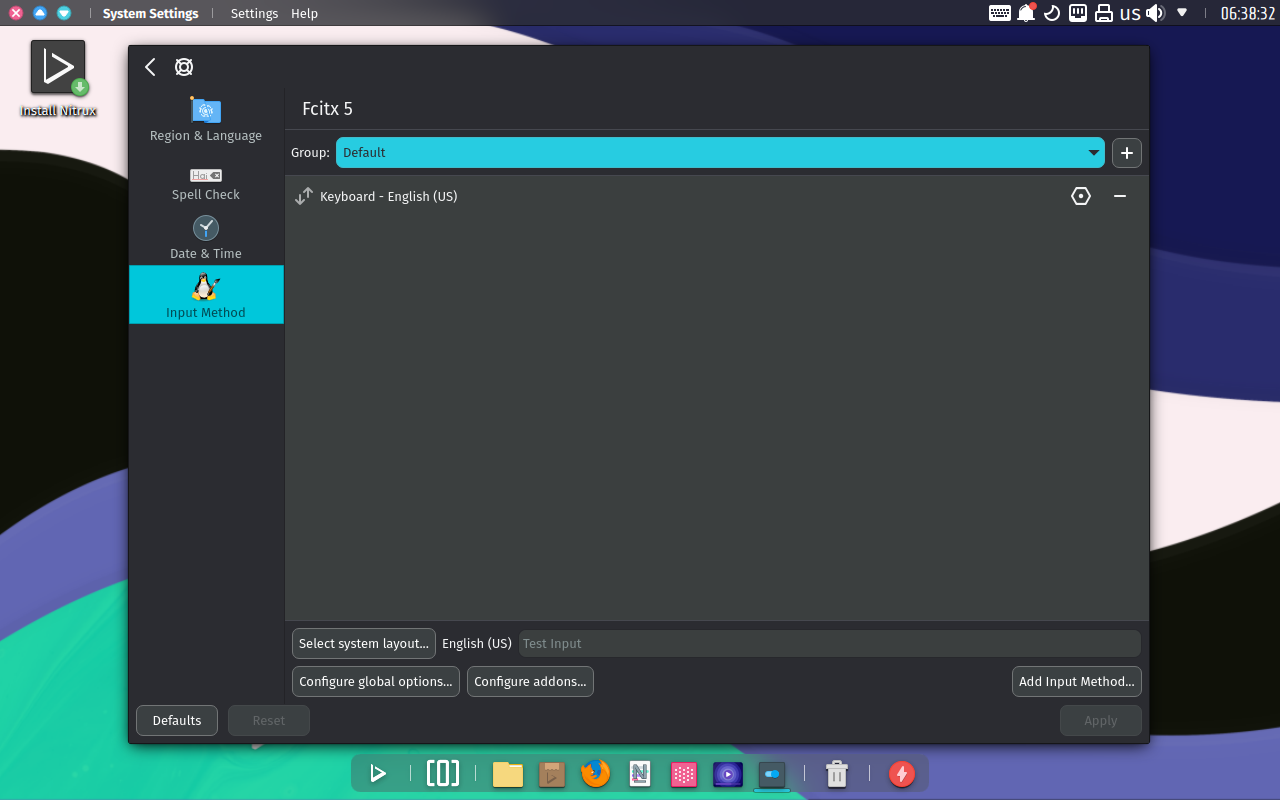
Next-generation audio management with PipeWire.
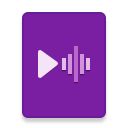
New low-level multimedia framework
PipeWire is a project that aims to improve audio and video handling significantly under Linux. It provides a low-latency, graph-based processing engine on top of audio and video devices that can support the use cases currently handled by PulseAudio and JACK. PipeWire was designed with a robust security model that makes interacting with audio and video devices from containerized applications easy, with support for Flatpak applications being the primary goal. Alongside Wayland and Flatpak, we expect PipeWire to provide a core building block for the future of Linux application development.
- Capture and playback of audio and video with minimal latency.
- Real-time multimedia processing on audio and video.
- Multiprocess architecture to let applications share multimedia content.
- Seamless support for PulseAudio, JACK, ALSA, and GStreamer applications.
- PipeWire supports applications using a sandbox like Flatpaks.
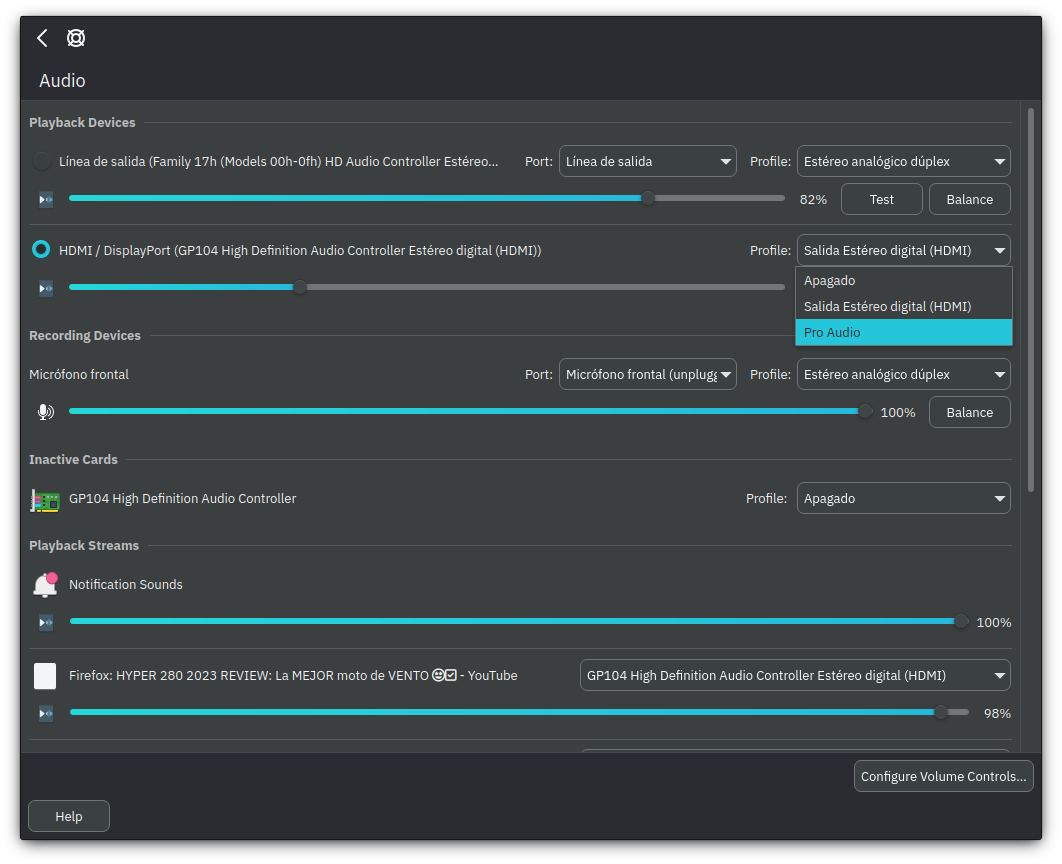
Next-generation display server with Wayland.
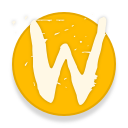
Introducing the future of display servers in Linux
Wayland replaces the X11 window system protocol and architecture to be easier to develop, extend, and maintain.
Wayland is the language (protocol) that applications can use to talk to a display server to make themselves visible and get input from the user (a person). A Wayland server is called a “compositor,” and applications are Wayland clients.
Wayland also refers to system architecture, and it is not just a server-client relationship between a compositor and applications. There is no single shared Wayland server like Xorg is for X11, but every graphical environment brings one of many compositor implementations. Window management and the end user experience are often tied to the compositor rather than swappable components.
A core part of Wayland architecture is libwayland: an inter-process communication library that translates a protocol definition in XML to a C language API. This library does not implement Wayland; it merely encodes and decodes Wayland messages. The actual implementations are in the various compositor and application toolkit projects.
Wayland does not restrict where and how it is used. A Wayland compositor could be a standalone display server running on Linux kernel modesetting and evdev input devices, on many other operating systems, or a nested compositor that is an X11 or Wayland application (client). Wayland can even be used in application-internal communication, as in some web browsers.
Part of the Wayland project is also the Weston reference implementation of a Wayland compositor. Weston can run as an X client or under Linux KMS and ships with a few demo clients. The Weston compositor is minimal and fast and is suitable for many embedded and mobile use cases.
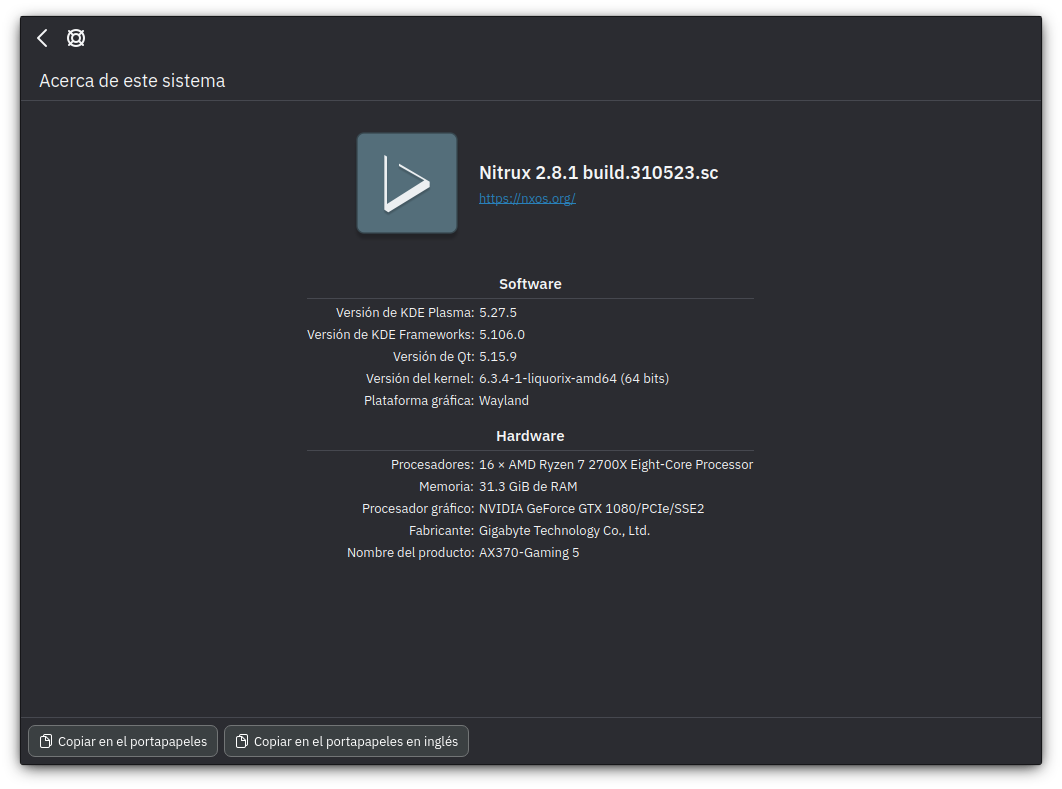
Access thousands of gaming titles with Steam.

SteamOS + Linux titles
Steam is a top-rated digital game store that offers Linux games (including free-of-cost games).
- Steam has both ported and native Linux games and offers Steam Play for selected Windows games in Linux.
Game with Steam Play
Steam Play also allows support for Windows-only games to work on Linux. Browse the newest, top selling, and discounted SteamOS + Linux-supported games.
Fourteen thousand one hundred thirty-one games work with Steam Play, with 20% of the 1000 most popular games on Steam listed as Platinum.
Valve created Proton, a tool that takes advantage of things like Wine and DXVK to make a video game developed for Windows playable on Linux with a few clicks. The user does not have to configure almost anything; everything is done through the Steam client for Linux.
**Steam is NOT installed by default. To install Steam, click ‘Install Steam’ in the applications menu.
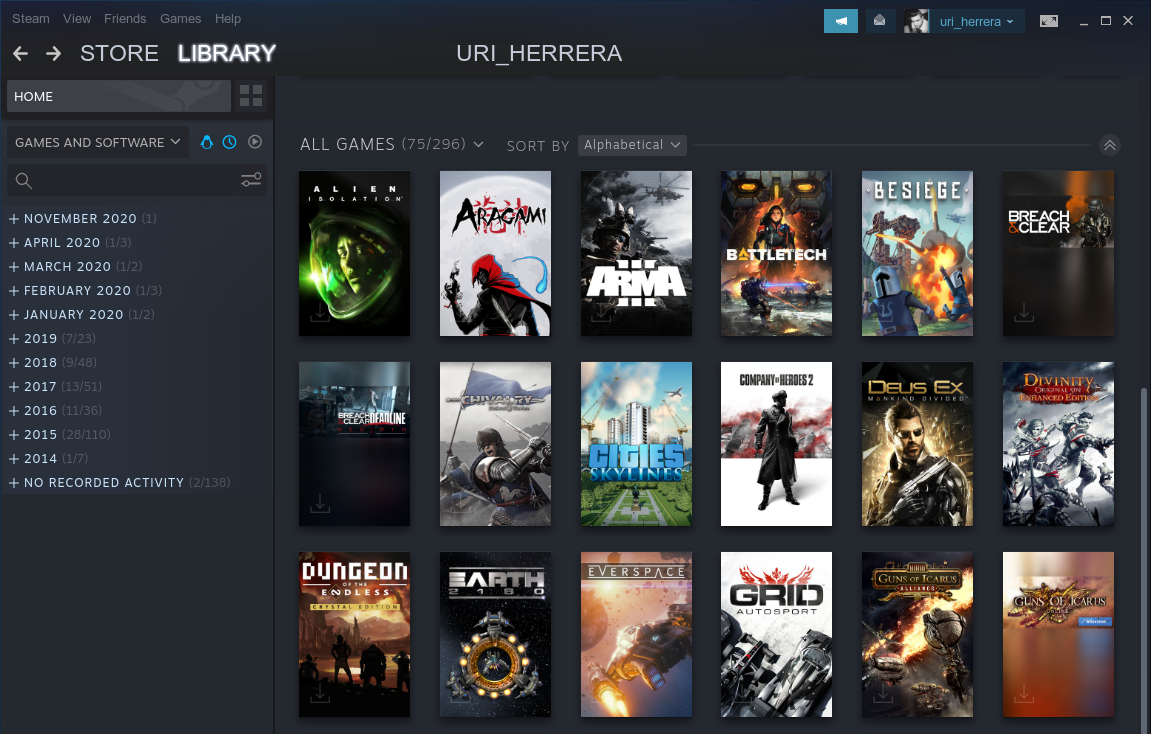
Get your game on with itch.io, an open marketplace for digital creators.

What is itch.io?
itch.io is an open marketplace for independent digital creators with a focus on independent video games. It’s a platform that enables anyone to sell their created content. As a seller, you’re in charge of how it’s done: you set the price, run sales, and design your pages. It’s never necessary to get votes, likes, or follows to get your content approved, and you can change how you distribute your work as frequently as you like.
itch.io is also a collection of some of the most unique, engaging, and independent creations you’ll find online. We’re not your typical digital storefront; with a wide range of paid and free content, we encourage you to look around and see what you find.
itch.io gives creators the tools to make intelligent choices about distributing their content. Creators can access detailed analytics about how people discover, download, or play what they’ve created.
Why was itch.io made?
itch.io was made to give game developers a marketplace where they get to control how their content is sold. Check out this blog post: Introducing itch.io.
Why buy on itch.io?
- itch.io allows sellers to set their revenue share: we call that open revenue sharing – that makes it one of the best places to support your favorite creators.
- Most itch.io releases come with DRM-free builds and extra keys when the game is available on Steam.
- Simply, there’s a lot of content on itch.io you will find nowhere else!
With an itch.io account, you can follow any creator, and it’ll appear in your feed. You’ll find new projects, updates, uploads, ratings, etc.
**The itch.io client is NOT installed by default. To install itch.io, click ‘Install itch.io’ in the applications menu.
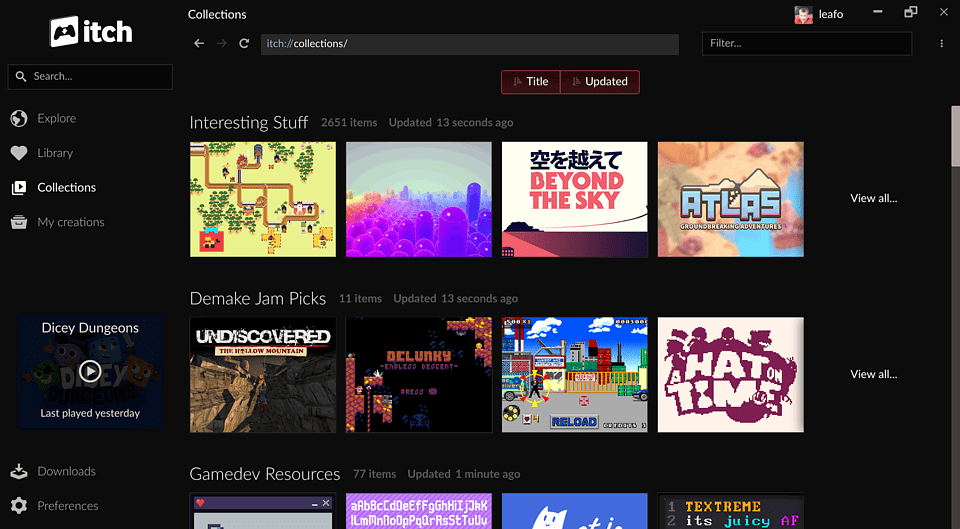
Easily run Windows software on Linux.
https://usebottles.com/
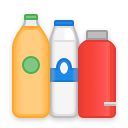
Run Windows in a bottle
Bottles is an application allowing users to run Windows software. Bottles use separate environments (or Bottles hence the name), allowing users to have separate settings for each program. Additionally, Bottles handles many things necessary to run software like .NET installers, VC redistributable packages, etc., which is done via its integrated dependency manager
Additionally, Bottles comes with a feature called Installers, allowing users to install many store launchers or select applications easily.
- Gaming ready. Bottles’ Gaming Environment comes reconfigured to support a large set of Windows video games on Linux.
- Environments power Bottles. Bottles introduce a new way to handle Windows prefixes using environments.
- Highly tweakable. Customize your Windows environment with ease.
**Bottles is NOT installed by default. To install Bottles, click ‘Install Bottles’ in the applications menu.
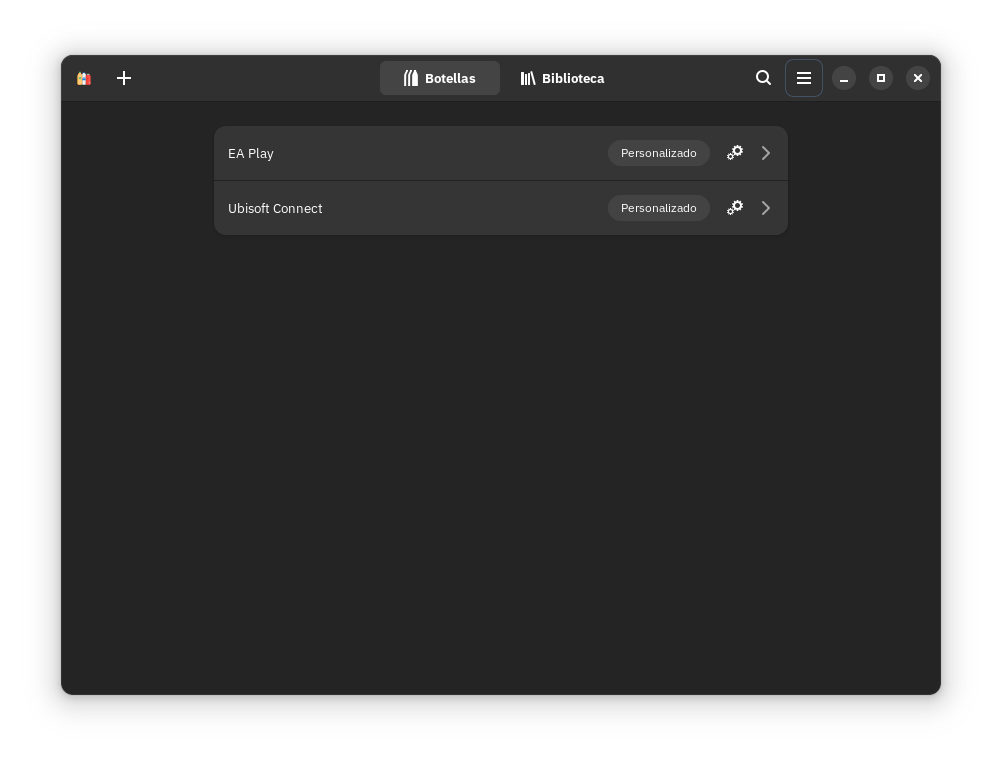
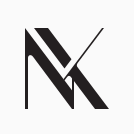
Community
Twitter | Facebook | YouTube | GitHub | Mastodon | Instagram | Threads | Telegram | Gitter | MeWe | E-mail
Resources
Blog | Changelog | Notes | Known Issues | Tutorial | PSA | Get Involved
© 2017-2024 Some Rights Reserved. Made with ♥ by Nitrux Latinoamericana S.C.
Any trademarks or logos used on this site are the property of their respective owners.
Check our Privacy Policy for more information about your data.
